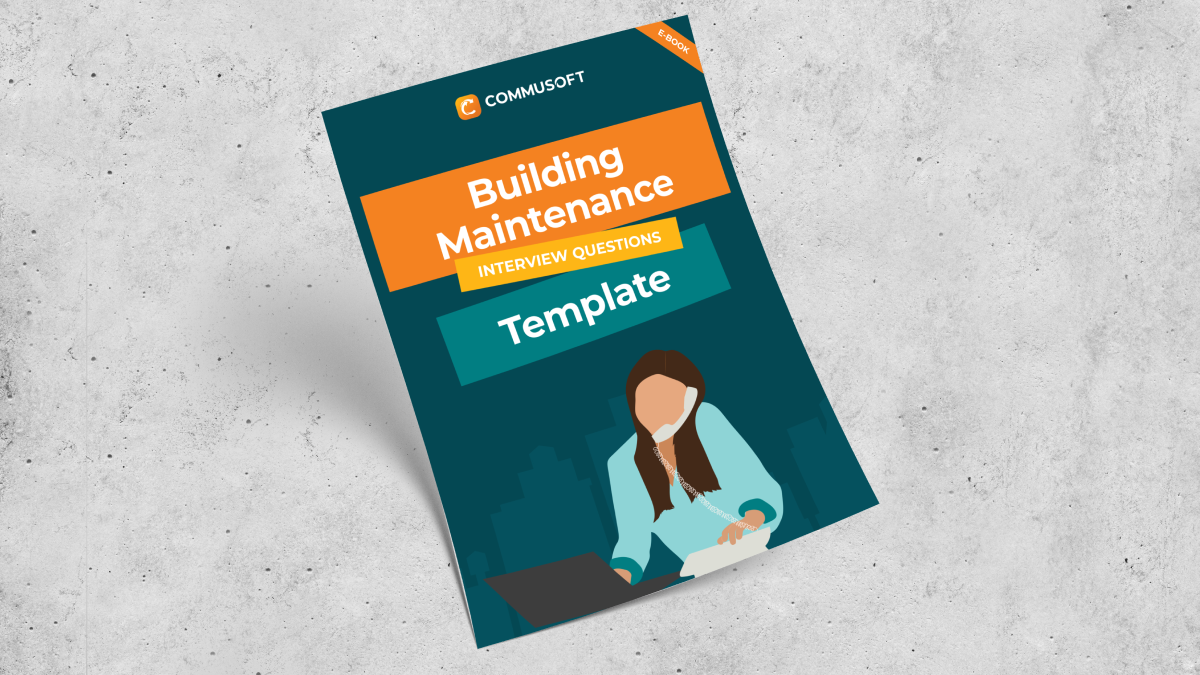How To Create An Apartment Building Maintenance Schedule
July 30, 2021 | Read: 8 minutes

An apartment building maintenance schedule can be a tricky to manage, but it’s also a very lucrative business for contractors.
Reliable, contract-based work can help companies establish a healthy cash flow and ensure they build long-term business relationships with customers.
At the same time, it’s more complex to manage than reactive residential work, with every job having to be booked in advance and approved by multiple stakeholders.
Not to mention all the emails you have to write.
Let’s explore how you can get your schedules organised, below:

What are the challenges of creating an apartment building maintenance schedule?
So, how do you get started writing a maintenance schedule?
Let’s acknowledge your likeliest disruptors.
Any type of maintenance work will have its challenges, but apartment buildings, as opposed to office spaces or other business premises, have two main ones:
Challenge 1: Tenants
Generally speaking, tenants don’t typically invest much thought into servicing appliances that they don’t own, knowing that if anything breaks down, the landlord is liable to replace. This means that you could send them numerous letters inviting them to call and book a service, but they will still postpone it until it’s forgotten.
What’s more, since most contracts don’t allow landlords or building managers to enter the property without the tenant’s approval, you’ll still have to coordinate your maintenance schedule with theirs, which wouldn’t be that difficult… if it wasn’t for the second challenge:
Challenge 2: Building/Property Managers
These stakeholders will have certain expectations when it comes to your maintenance schedule, expectations that are most likely built into your service level agreement. This means if you don’t manage to get a hold of a tenant in the allotted service time window, you’re liable to breach your SLA, which could incur you a fine. Too many breaches, and you stand to lose a lucrative contract.
With these challenges in mind, a good plan for your maintenance schedule should follow these steps:
How do I set up an apartment building maintenance schedule?
Here are 6 steps you can follow:
1. Consult your service level agreement
Your apartment building maintenance contract is going to make it easy to gauge your deadlines. For each appliance and job, you’ll have a timeline and it’s your responsibility to book in the jobs on time.
As mentioned, SLA breaches can be costly so these deadlines should be your priority. It’s a good idea to start your maintenance schedule with them.
Simply list every task, its successive deadlines, and then create a spreadsheet. Excel is fine, but a Google Sheet or other software will give you the option to share it with multiple people, provide some of them with editing privileges, or ensure others are only able to view.
2. Set-up breach notifications
If you’re making-do with a spreadsheet or some other free tool, you won’t be able to access automated notifications in the same way that you would with a comprehensive maintenance schedule software. Of course, you can still work around it and combine the spreadsheet with a dedicated Google Calendar, where you can set up notifications 2 weeks before a breach, 1 week, and 48h, and color-code them, but it’s not as neat as the all-in-one solution.
This method of managing your maintenance schedule has the advantage of being free and accessible to a building maintenance company who is just getting started. However, it’s difficult to manage and will require you to hire a dedicated admin just to keep track of all the deadlines and avoid breaches – which is obviously costly and offsets any savings you might have made on service contract software.
At the same time, nowadays, it’s hard to imagine winning an apartment building maintenance contract if your contract proposal details how you’ll use a spreadsheet and Google Calendar to ensure flats are serviced and safe for tenants. Building managers have higher expectations and these contracts are worth more than enough to justify investing in a dedicated tool.
3. Record job duration and streamline the process
The advantage of maintenance work is that most of the jobs are routine. With a bit of experience and good record-keeping, you can write down a pretty good approximation of how long each one takes. This way, you know if you should allocate 2h, half a day, or a full work day to each appointment.
Keeping a close eye on job duration, tracking your vehicles, and recording the information in a database will give you a better idea of your overheads and inform your pricing. Additionally, tenants will appreciate a service window that gives them more detail than “a technician will be with you before the end of the day”.
And speaking of tenants…
4. Make it easy for tenants to book
Like we mentioned earlier, tenants are going to be a challenge to handle and, generally speaking, it can take multiple reminders for them to book a service with you.
If this is a problem, it’s important to be proactive and take control of the situation. That means by figuring out why they’re so slow to book and solving that problem.
One particularly common reason is because of the way contractors contact tenants, either by using letters, or calling on the phone. It’s no longer the most efficient way to book a job.
Both methods have multiple points of friction and tenants can be discouraged or simply forget to respond. That’s especially if it’s just about maintenance, rather than repairing an appliance that they need.
Ideally, you’d switch from letters to sending an email. This gives you greater control to schedule and send additional reminders as part of their appliance or apartment building maintenance schedule.
The final reminder should also inform them of the consequences of not booking, which will be dependent on the appliance in question and your state laws.
For example: in some states, it’s legal to enter the property without the tenant’s approval if their unserviced asset is likely putting others at danger.
However, before you end up in such an extreme situation, the easiest way to get a tenant’s attention is by making it as easy for them to book an appointment in the first place.
Do this by adding a booking portal link to a page that resembles what they see on sites like Booking.com or AirBnB, where they can select a date and time for the service. It’s important to make sure you also send a confirmation to the tenant so they can be confident they’ve taken care of the appointment.
5. Let building managers see their jobs
Another great way to win a contract and impress your commercial clients is to offer them a portal of their own, with a dedicated customer view into your maintenance schedule. This is generally referred to as a customer portal.
Depending on your base management software your options can vary, but the most basic one should give building managers the possibility to view any appointments they’ve had with you, any upcoming scheduled jobs, as well as an option to book new ones, straight into your calendar.
Not only will this give you a competitive edge when you’re tendering for contracts, but customers will always be able to see you’re doing your best to uphold SLAs and it provides them with a remarkable customer experience.
In addition to scheduling benefits, letting building managers see their jobs will also save your admin a great deal of time, as the customer can check information like invoices, job reports, debts, and more on their own.
6. Set-up reporting tools so that you know what to improve in the future
How many times have you serviced an apartment building last year? How many tags did you use each time? Did it take long? How much did every appointment cost you, in terms of parts, work hours, and other overheads?
Maintenance schedule records are vital to answering these questions because if you don’t know your service history, you’ll end up repeating the same mistakes in the future, whether that’s SLAs breaches being owed to tardy tenants or undercharging your customer.
Historical reports also help you build better proposals when trying to get more contract work in the future. On one hand, they give you accurate numbers to take back to property managers, and on the other, they show how thorough and attentive to detail you are.
Who wouldn’t want to work with a maintenance company like that?
Here’s how you start winning contracts:
It’s hard to understate the true value of managing your maintenance schedule well; it’s remarkable what it can bring to your business!
Sure, recording this information might not seem like the most exciting part of the job, but taking care to cultivate it carefully will mean there’s no denying it will yield sweeter fruit: whether that be through happy customers, an efficient business, or lower operational costs.
At the same time, keeping things organised can mean more easily finding new opportunities to grow your business. With that in mind, we’ve got just the thing to help…

Cristina Maria
I'm here to bring you next-level strategies to the field service industry. When I'm not working on the best tips to grow your business, I'm on the lookout for sci-fi novels and cookie recipes.








